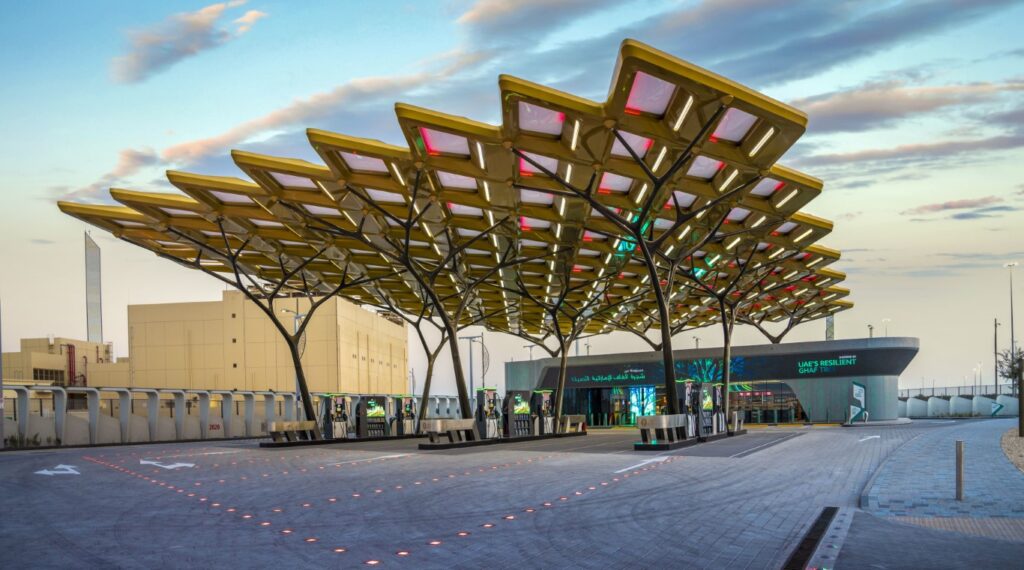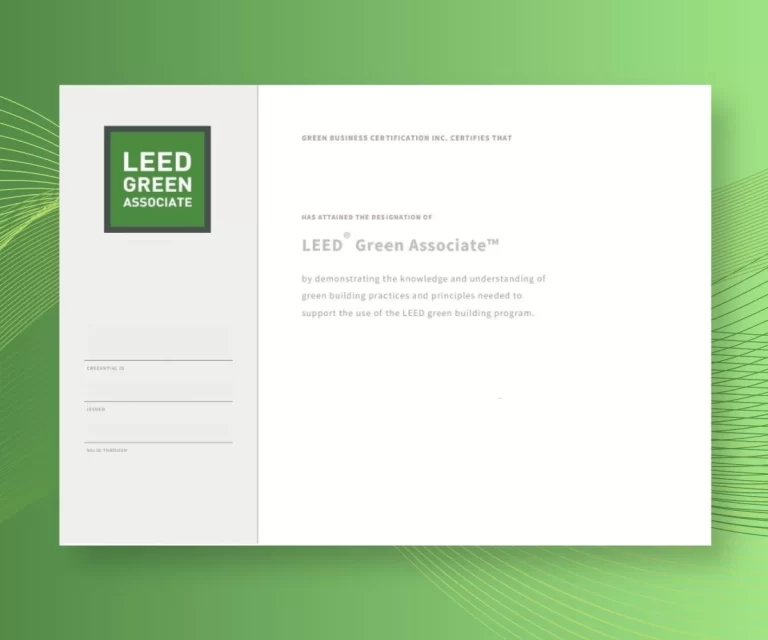The significance of green buildings in today’s world of growing environmental consciousness cannot be emphasized. The LEED certified definition, a certification that highlights elements like energy efficiency, water conservation, and eco-friendly materials and indicates that a building has satisfied certain environmental performance and sustainability requirements.
LEED certified buildings are essential in decreasing carbon emissions, conserving energy, and promoting sustainable practices—all of which contribute to the mitigation of climate change. These buildings use eco-friendly materials and technologies in their resource-efficient design.
We will examine the actual meaning of LEED certification in this post, as well as the several certification levels and the particular requirements that must be fulfilled in order to get certified. We will also learn about the advantages that LEED-certified buildings have for the economy, the environment, and the occupants.
Come along as we explore the meaning behind LEED certification and how these environmentally friendly structures are laying the foundation for a more sustainable and optimistic future.

What is the LEED Certified Definition?
LEED Certified, LEED certified, and LEED accredited do not mean the same thing.
LEED Certified means a building has achieved the certification at base level (40-49 points). Whereas LEED certified with a lower case “c” means a project achieved the certification but we do not know the level. Anywhere from base level, silver, gold or platinum. Lastly LEED accreditation is for people, not for buildings. Which effectively represent LEED Green Associate and LEED AP.
A building that has earned LEED certification has been created, built, and managed with an emphasis on environmental responsibility and sustainability. It is a widely accepted representation of a building’s dedication to resource conservation, occupant health and well-being, and energy efficiency. Sustainable practices, such as the use of renewable energy sources, water conservation, waste reduction, and the adoption of environmentally friendly materials and technologies, are given priority in LEED certified buildings.
Why are Green Buildings Important?
Green buildings are the cheapest and most effective way to reduce negative impact on the environment when compared to agriculture, transportation, and manufacturing. To solve the urgent environmental issues of our day, green buildings are crucial. They significantly contribute to the reduction of greenhouse gas emissions, the preservation of natural resources, and the enhancement of the built environment. Green buildings enhance the planet’s and its people’ overall well-being by utilizing sustainable design ideas and techniques.
The capacity of green buildings to lower carbon emissions is one of their main advantages. Through energy efficiency optimization and the utilization of renewable energy sources, these buildings reduce their carbon footprint and contribute to the fight against climate change. Water conservation is also given priority in green buildings through the use of reclaimed water for non-potable uses, rainwater collection, and energy-efficient plumbing systems. This lessens the burden on municipal infrastructure while also assisting in the preservation of water supplies.
Additionally, green buildings encourage tenants to live in healthy interior environments. It has been demonstrated that using non-toxic materials, natural lighting, and clean air all increase productivity, lower the number of sick days, and promote general wellbeing. By including green spaces, biophilic design features, and access to outside areas, green buildings also promote a sense of well-being and mental renewal by encouraging a connection with nature.

Benefits of LEED certified buildings
There are several advantages for both the environment and the occupants of LEED certified buildings. These advantages endure throughout the building’s entire existence and go beyond the first stages of construction.
Buildings with LEED certification significantly lower energy use and carbon emissions from an environmental standpoint. Through the use of energy-efficient insulation, lighting fixtures, and HVAC systems, they are made to maximize energy performance. Reliance on fossil fuels and greenhouse gas emissions are further decreased by including renewable energy sources like solar panels.
Water conservation is also given top priority in LEED-certified buildings, which make use of innovations like water-efficient landscaping and low-flow fixtures. These buildings encourage sustainable water practices and lessen the burden on nearby water resources by using less water and putting effective water management methods into place.
Apart from their favorable effects on the environment, buildings that have earned LEED certification provide residents other benefits. Productivity and comfort are increased when natural lighting and high-quality indoor air quality solutions are used. Including green spaces and providing access to outside regions is beneficial for both mental and physical health. In addition to prioritizing the use of non-toxic materials and finishes, LEED certified buildings provide a healthy indoor environment free of dangerous substances.
LEED certification process
The choice to pursue certification is the first of several steps in the LEED certification process, which ends with the final evaluation and certification award (plaque). Both new construction projects and existing buildings looking to increase their sustainability performance can apply.
- Project Registration: The first stage is to register the project with USGBC. This entails giving project specifics and making the required payments.
- Submission of Documentation: Uploading all project data on LEED Online, targeting and submitting the credits and prerequisites required. Including architectural drawings, energy models, material specifications, and performance data, must be gathered and submitted by the project team. Using this data, GBCI will verify if submittals are in order or not. This section takes as much as the project needs to finish since some credits are in the construction phase and will not earn approval before achieving them.
- Certification and Recognition: The project receives LEED certification after earning all prerequisites and at least 40 points (base level). A certificate is awarded for the accomplishment, and the project is listed in the USGBC project directory.

How Much Does LEED Cost?
Initially 1,500$ for registration, then cost will revolve around the size of the project. But despite the common belief that green buildings are costly, LEED certified buildings can save a substantial amount of money over the course of their lifetime. The long-term advantages greatly exceed the initial outlay of funds, even though the construction expenses may be slightly greater at first.
First the project will have decreased energy costs and decreased energy usage are the outcomes of energy efficiency measures adopted in LEED certified buildings. This results in significant financial savings for both building owners and tenants. Furthermore, using renewable energy sources can result in long-term financial gains and further offset energy expenses.
Cost-saving measures also include water conservation techniques. Water expenses and the need for costly infrastructure repairs are decreased in LEED certified buildings by decreasing water usage and implementing effective water management measures.
Additionally, it has been demonstrated that LEED certified buildings have better tenant retention, higher occupancy rates, and increased employee productivity. These buildings’ provision of a comfortable and healthy indoor atmosphere improves tenant happiness and well-being, which has a beneficial effect on business performance. Which allows real estate agents to sell the project faster and for more. Lastly not to forget low interest loans supported by governments and central banks for developers than create sustainable green buildings rather than conventional ones.
In conclusion, LEED certification and green buildings
Building design, construction, and operation have all undergone radical change thanks to LEED certified structures. They now stand for human welfare, environmental stewardship, and sustainability. The significance of green buildings and LEED certification is paramount as we progress towards a more sustainable future.
It is indisputable that LEED certified buildings benefit the local economy, the environment, and the residents who live there. These structures save a substantial amount of money, improve tenant health and well-being, reduce carbon emissions, and preserve natural resources.
The future of green buildings and LEED certification is even more promising as sustainability practices and technology develop. Building performance and sustainability will be further improved by ongoing innovation in design, construction methods, and materials. We can design an environment that not only satisfies our current needs but also guarantees a greener and better future for future generations if we become more conscious of and dedicated to sustainable activities.
Never forget that each LEED certified building is a step toward a more sustainable global community. To improve the future for the earth and ourselves, let’s work together and accept the real significance and benefits of green buildings.

